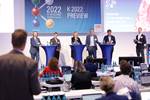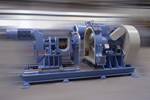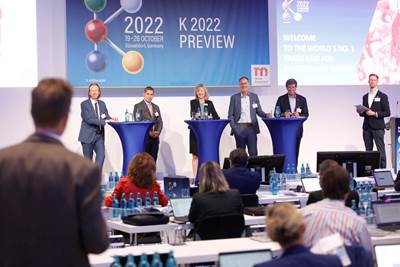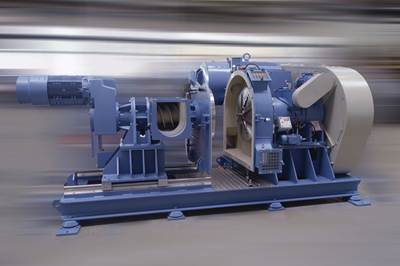K 2022: ‘We’ve Been Waiting 40 Years!’
With sustainability top-of-mind in the plastics industry, this was a ground-breaking show for builders of recycling equipment. It also prompted new thinking in thinwall injection molding.
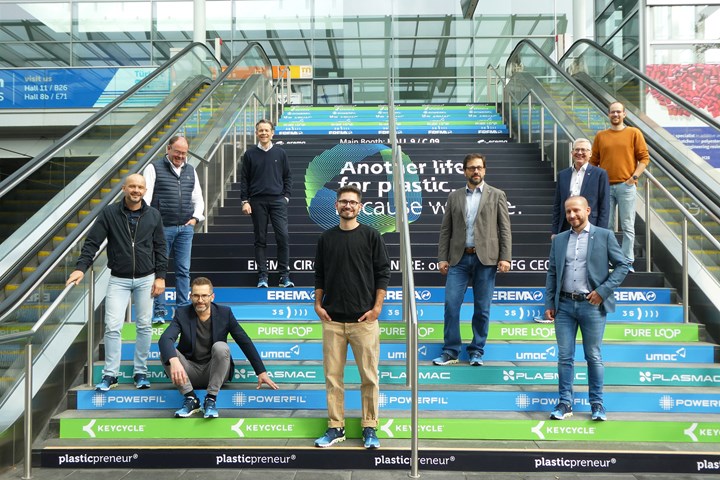
Erema’s Dr. Gerold Breuer, head of marketing and corporate development (3rd from right), said this recycling-themed K fair was the show they had been awaiting for 40 years. (Photo: Erema Group)
If you’ve been following the news about the just-completed K 2022 show in Düsseldorf, then you are well aware that overarching themes of the event were sustainability and the circular economy. The vast majority of the 3037 exhibitors (down 9% from 3330 in 2019) made an effort to connect their products and business to those themes by emphasizing attributes such as energy savings, waste reduction, lightweighting and methods of reusing post-consumer and post-industrial plastics.
Those who did not have to stretch themselves in the least to make such connections were suppliers of recycling machinery and technology. One who was quite happy with the focus of this year’s K show was Dr. Gerold Breuer, head of marketing and corporate development for Erema Group, a leading suppler of recycling hardware. He was interviewed at his booth by K-LIVE as one of its 5- to 8-min Highlight Tours of different halls at the show.
“We have been waiting for this show for 40 years now, because it’s the first time that recycling is in the focus of the whole industry,” Breuer said on camera. “We go from a niche to a must-have.”
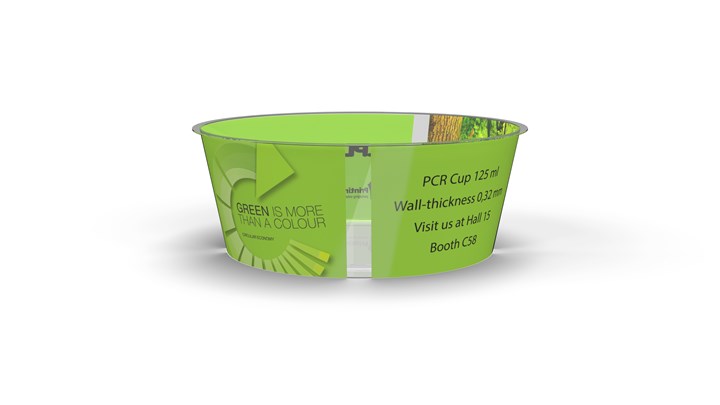
Engel said injection molding very thinwall (0.32 mm) PET cups is a new capability that expands food-grade recycling possibilities. The IML cups at the show (125 ml, four cavities) contained 30% rPET and utilized new injection-unit and clamp-control developments for high-speed (3-sec) molding. (Photo: Engel)
One of the other K-LIVE Highlight Tours visited the booth of Engel, the injection machinery builder. Among its sustainability-themed exhibits was very thinwall injection molding of PET cups, something that Dr. Klaus Fellner, Engel’s team leader for circular economy, said was not previously possible. According to Engel, the importance of this development is that PET is currently the most widely available material for food-grade recycling, and this demonstration increases the opportunities for uses of PET and rPET beyond bottle-to-bottle to bottle-to-cup or even cup-to-bottle recycling.
In this case, four clear, shallow 125-ml cups with IML were molded from 30% rPET at 0.32 mm wall thickness. To accomplish this, an Engel all-electric e-speed 280/50 (280 metric tons) was upgraded with a new high-performance injection unit capable of injection speeds up to 1400 mm/sec and pressures up to 2600 bar (37,700 psi) for processing small shots with an extreme wall-thickness to flow-length ratio. This was complemented by an Engel screw design tailored for processing up to100% rPET to yield a viscosity suitable for thinwall injection. This exhibit also demonstrated the value of Engel’s new iQ motion control software module, which optimizes the clamp motions automatically for the shortest cycle time, taking into account the opening stroke, mold weight and closing force. With iQ motion control, the time for mold movement was reduced from 1.27 sec to 1.12 sec, a 12% reduction, and overall cycle time was cut 5% from 3.15 to 3 sec.
It's worth noting that Arburg also claimed to open new doors for thinwall injection molding at the show, emphasizing it as an alternative to thermoforming for cups. In this case the material was a Borealis PP based on renewable or chemically recycled feedstock. Four IML cups weighing 12 g each, with a wall thickness of 0.37 mm, were molded in 4.5 sec on an all-electric Allrounder 720 A (290 m.t.) in “Ultimate” performance configuration. This included a new injection unit capable of speeds to 400 mm/sec. The demo used injection-compression molding.
In case you’re wondering, despite war in Ukraine, continuing Covid lockdowns in China, and other issues, K 2022 drew 176,000 attendees from 157 countries. Though that was down 22% from 225,000 attendees from 165 countries in 2019, that’s still an awful lot of people at a plastics show.
Related Content
Foam-Core Multilayer Blow Molding: How It’s Done
Learn here how to take advantage of new lightweighting and recycle utilization opportunities in consumer packaging, thanks to a collaboration of leaders in microcellular foaming and multilayer head design.
Read MorePHA Compound Molded into “World’s First” Biodegradable Bottle Closures
Beyond Plastic and partners have created a certified biodegradable PHA compound that can be injection molded into 38-mm closures in a sub 6-second cycle from a multicavity hot runner tool.
Read MoreLatest Data on Bottled Water Shows Continued Strong Growth
Bottled water’s volume surpassed soft drinks for the first time in 2016 and has done so every year since.
Read MoreHow to Optimize Injection Molding of PHA and PHA/PLA Blends
Here are processing guidelines aimed at both getting the PHA resin into the process without degrading it, and reducing residence time at melt temperatures.
Read MoreRead Next
K 2022 Preview: Injection Molding Closes the Circle, Digitally
Because the market requires sustainability—and important component of which is the circular economy—and sustainability requires digitization, all three will be major themes at injection molding booths at K 2022.
Read MoreRecycling Challenges Become Opportunities with the Aid of New Technologies
The latest recycling equipment on view at the K Show handles more materials, is more efficient and produces higher quality output than ever achieved before.
Read MoreMaking the Circular Economy a Reality
Driven by brand owner demands and new worldwide legislation, the entire supply chain is working toward the shift to circularity, with some evidence the circular economy has already begun.
Read More

